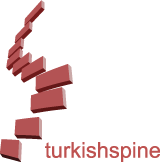ABSTRACT
Background Data:
Short segment pedicle screw fixation with additional pedicle screws at the fractured level improves stability and provides better correction of deformity. This surgical technique allows anterior column support through indirect reduction.
Purpose:
The aim of this study was to evaluate the effect of short-segment posterior fixation including pedicle screw at the fractured vertebra.
Materials-Methods:
Between 1997 and 2013, 25 patients who had treated for unstable thoracolumbar vertebra fracture with using pedicle screw at the fractured level were reviewed retrospectively. All patients evaluated by radiographs, computed tomography and magnetic resonance. Local kyphosis, anterior and posterior wall height were studied on lateral X-ray preoperatively and postoperatively. Functional outcome and pain were assessed by Oswestry Disability Index (ODI) and visual analog scale (VAS) scores. The unpaired Student’s t-test and Mann Whitney U test and also, SPSS v.20.0 (SPSS Inc., Chicago, IL, USA) were used for statistical analyses.
Results:
In this study, the mean age was 52 (20-84). The most common injured area was thoracolumbar spine (%75) and L1 was the most commonly affected vertebra (%43). Preoperative mean anterior wall height was 19 mm (12-27 mm) and posterior wall height was 29 mm (17-38 mm). Postoperative anterior wall height was 27 mm (16-36mm) and posterior wall height was 31 mm (19-38 mm). The mean local kyphosis angle was decreased from 17 degree (8-26 degree) to 2.7 degree (-7,9 degree). Statistically, increase of anterior corpus height and decreasing of the local kyphosis angle have a significant difference (p<0.05). Laminectomy and posterior wall height did not have a significant difference between pre- or postoperatively (p> 0.05). The mean VAS score was 2.2 (0-7) and the mean Oswestry score was 9.8 (3-24).
Conclusion:
Short-segment pedicle screw fixation with pedicle screw at the fractured level is a safe and effective surgical method for unstable thoracolumbar fractures through improves stability and provides anterior column support.



